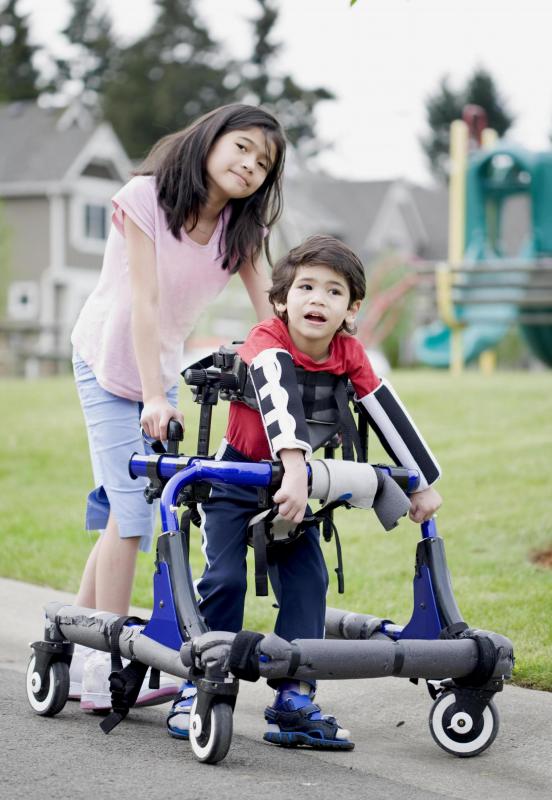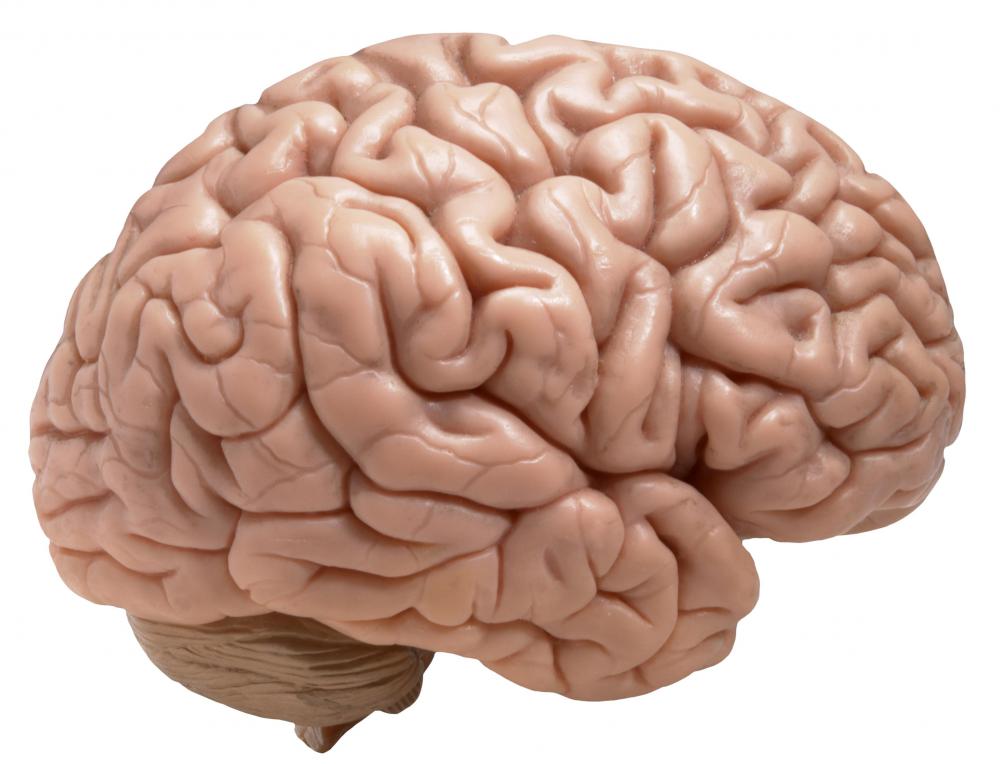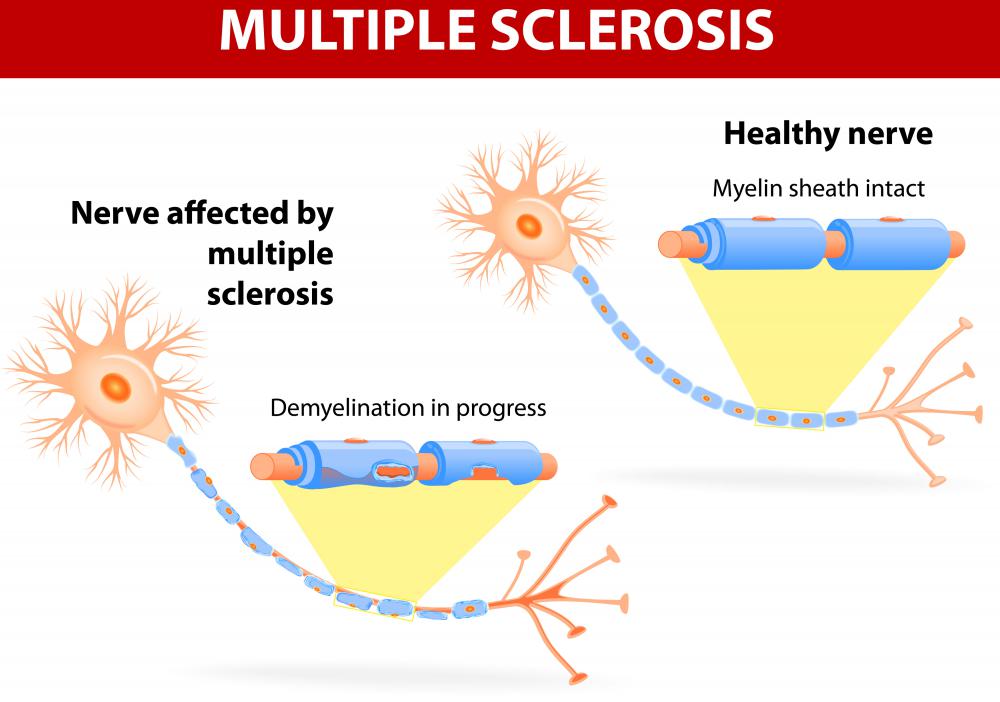At TheHealthBoard, we're committed to delivering accurate, trustworthy information. Our expert-authored content is rigorously fact-checked and sourced from credible authorities. Discover how we uphold the highest standards in providing you with reliable knowledge.
What is an Abnormal Gait?
An abnormal gait is an abnormality in the way a person walks or runs. It is a common symptom of illnesses and disorders that affect the nervous system, muscles, or bones. It can also be the result of injuries or congenital deformities in the feet, legs, or hips. In severe cases, an abnormal gait can significantly impair a person's mobility or put him or her at greater risk of injury due to falls.
Gaits vary according to factors such as the speed and rhythm of a person's steps; how a person's legs and feet bend as he or she moves; and how his or her feet hit the ground with each step, called a foot strike. Gait also encompasses how parts of the the upper body, such the arms, shoulders, and chest, move in sync with the legs as a person walks. What constitutes a normal gait is not the same for every person and varies according to factors such as height, age, and sex. Abnormal gaits can take many different forms according to their causes.

Gait abnormalities caused by pain often result in an antalgic gait. In an antalgic gait, a person spends less time than normal in what is called the stance phase, the point between steps when both feet are on the ground. This allows the person to minimize the amount of pressure put on a damaged leg by keeping it off the ground as much as possible.
An antalgic gait frequently results in a limp, an asymmetrical gait in which pain, weakness, or deformity in one leg causes a person to use the other leg more while walking. This results in longer steps with one leg than the other, causing him or her to take longer steps with one leg than the other and move in a jerky, halting fashion. This can be caused by physical injuries to the leg or hips, infections, or osteoarthritis. A limping gait can also occur without pain due to a skeletal deformity, such as hip dysplasia or asymmetrical legs.

An abnormal gait is often the result of problems in the nervous system. One of the common symptoms of Parkinson's disease, a disorder caused by insufficient amounts of the neurotransmitter dopamine, is a slow, shuffling walk, often called the Parkinsonian gait. It is also known as a festinating gait.
Another condition called spastic cerebral palsy often causes a scissor gait, in which a person's knees or thighs strike or cross over each other as they walk. This is due to abnormally high amounts of tension, or hypertonia, in the leg and hip adductor muscles that are responsible for moving the limbs closer to the sagittal plane, or the vertical center line of the body. A person with a scissor gait often has to walk on his or her tiptoes due to the tension and inflexibility in his or her muscles. Aside from cerebral palsy, a scissor gait can also be caused by injury to the spinal nerves; other nerve disorders affecting motor control, such as multiple sclerosis and syringomyelia; or stroke. It can also be the result of nervous system damage due to acute liver failure.

Several types of abnormal gait can be caused by ataxia, or loss of muscle coordination due to damage to parts of the brain associated with motor control, most commonly the cerebellum. This can be caused by diseases such as multiple sclerosis and cerebral palsy, damage caused by a stroke or blow to the head, or substance abuse, among other things. Sufferers can develop what is called an ataxic gait, walking unsteadily with their feet spread far apart to maintain balance. A type of ataxia called Bruns ataxia causes a magnetic gait, so called because sufferers struggle to lift their feet upward as they walk, as if they were resisting the pull of a magnet.
AS FEATURED ON:
AS FEATURED ON:

















Discussion Comments
I know people who have had their gaits measured or studied so they could decide what kinds of shoes they should wear to help prevent back and foot pain. I don't know exactly what the tests involve. This is similar to those foot machines you see in the stores that tell you what type of insoles will work best for your foot design.
This makes sense to me. After all, most shoes are made and then bought by people with different shaped feet, so we know that a lot of these people are wearing shoes that are not the best for their feet. Maybe if nothing else, gait studies can save us a bit of foot pain and lower body issues later in life.
@Sporkasia - Do a little reading and you will see that most of the so called gait analysis studies are really bogus. Trying to determine the perfect way for a person to run or walk is impossible because there is no true way to measure this perfection. Sure you might be able to make some changes if a person has some major flaw, like they skip every other step, that takes away from speed, but as a whole, this is bogus and serves little purpose other than to make money for some people.
Never having thought much about the way I walk or the way I run, I was a bit surprised to learn that there are so many places where people can go to study their gaits and have professionals suggest ways they can "improve" the ways they walk and run. All of these years I may have been walking and running the wrong way and I didn't even know.
Actually, most of these places are directed at athletes who are trying to improve the way they move as a way of helping them become better at their sports. I couldn't believe how technically complicated movements like walking and running really are when you break them down with science.
Post your comments